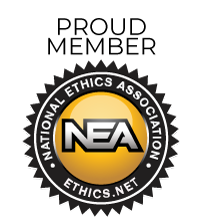Getting Organized: A Checklist for Filing Your 2023 Income Taxes
As tax season approaches, getting organized is key to a stress-free filing process. A comprehensive checklist can help you stay on top of things and prevent stress or a last-minute rush to get the job done correctly. Here's a guide to ensure you have all your ducks in a row for filing your 2023 income taxes:
Gather Personal Information
Begin by collecting essential personal information for yourself, your spouse, and your dependents. This includes Social Security numbers, birthdates, and, if applicable, individual taxpayer identification numbers (ITINs).
Income Documentation
Compile all income-related documents, such as W-2s for employment income, 1099s for freelance or contract work, and statements for interest, dividends, or rental income. If you received unemployment benefits or made withdrawals from retirement accounts, gather relevant documentation for those as well.
Deductions and Credits
Organize documentation related to potential deductions and credits. This could include receipts for charitable contributions, medical expenses, education expenses, and homeownership-related documents like mortgage interest statements.
Healthcare Information
Ensure you have proof of health insurance coverage, as this is crucial for avoiding potential penalties. Gather forms such as the 1095-A, 1095-B, or 1095-C that outline your coverage.
Records of Investments
If you bought or sold investments during the tax year, gather records of capital gains and losses. Brokerage statements and records of investment purchases and sales are essential for accurate reporting.
Business and Self-Employment Documents
If you're a business owner or self-employed, organize records of income, expenses, and receipts for potential deductions. This includes business-related travel, equipment purchases, and any home office expenses.
Retirement Contributions
Ensure you have documentation for any contributions made to retirement accounts. This includes traditional and Roth IRAs, 401(k)s, and other retirement savings plans.
Education Expenses
If you or your dependents pursued higher education, gather records of tuition payments, student loan interest statements, and any documentation related to educational expenses.
Remember that early preparation can alleviate stress and potentially identify opportunities for tax savings. If you encounter any complexities or uncertainties, consider consulting with a tax professional for personalized guidance. Getting organized today ensures you'll confidently navigate the tax season and hopefully avoid any mistakes that can lead to frustrating delays later.


QUICK LINKS
QUICK LINKS
Securities offered through CreativeOne Securities, LLC Member FINRA/SIPC. Retirement Advisers and CreativeOne Securities, LLC are not affiliated.
Licensed to sell insurance in the following States: MA, RI, CT, and ME.
Licensed Insurance Professional. We are an independent financial services firm helping individuals create retirement strategies using a variety of investment and insurance products to custom suit their needs and objectives. This material has been prepared for informational and educational purposes only. It is not intended to provide, and should not be relied upon for, accounting, legal, tax or investment advice. 20562 - 2020/11/4
Investing involves risk, including the loss of principal. No Investment strategy can guarantee a profit or protect against loss in a period of declining values. Any references to protection benefits or lifetime income generally refer to fixed insurance products, never securities or investment products. Insurance and annuity products are backed by the financial strength and claims-paying ability of the issuing insurance company.
Securities offered through CreativeOne Securities, LLC Member FINRA/SIPC. Retirement Advisers and CreativeOne Securities, LLC are not affiliated.
Licensed to sell insurance in the following States: MA, RI, CT, and ME.
Licensed Insurance Professional. We are an independent financial services firm helping individuals create retirement strategies using a variety of investment and insurance products to custom suit their needs and objectives. This material has been prepared for informational and educational purposes only. It is not intended to provide, and should not be relied upon for, accounting, legal, tax or investment advice. 20562 - 2020/11/4
Investing involves risk, including the loss of principal. No Investment strategy can guarantee a profit or protect against loss in a period of declining values. Any references to protection benefits or lifetime income generally refer to fixed insurance products, never securities or investment products. Insurance and annuity products are backed by the financial strength and claims-paying ability of the issuing insurance company.


